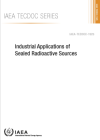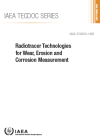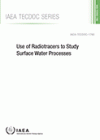Tracers are substances with atomic or nuclear, physical, chemical or biological properties that can help identify, observe or follow the behaviour of various physical, chemical or biological processes. Radioactive tracers are widely used to diagnose industrial reactors, for instance by measuring the flow rate of liquids, gases and solids.
Radiotracers
A radioactive tracer is a chemical compound in which one or more atoms have been replaced by a radioisotope. Monitoring its radioactive decay, a radiotracer can be used to explore the mechanism of chemical reactions . They are also used for flow visualisation through different technologies, such as Single Photon Emission Computed Tomography (SPECT), Positon Emission Tomography (PET) and Computed Radioactive Particle Tracking (CARPT).
Radiotracer technology is playing a more and more important role in industry. It is used to diagnose specific causes of inefficiency in a plant or process operation and to generally investigate processes in industries and those related environments where a great cost-benefit ratio can be gleaned from process optimization and troubleshooting, such as in the transport of sediments. It is expected that this important role will continue to expand, especially if students and engineers are exposed in their academic training to the many possibilities of this tool for research, development and application.
Through its technical cooperation projects, the IAEA plays a major role in facilitating the transfer of radiotracer technology to developing Member States. It assists them with the development of its human resources, supports the education of young specialists and helps maintain good practices that are needed to ensure the sustainability of technologies and knowledge transfer. Training material developed for radiotracer specialists and radiotracer practitioners worldwide include for instance the radiotracer residence time distribution method for industrial and environmental applications.
Preparing a radiotracer investigation
Various requirements need to be met before running a radiotracer investigation. The most important of these is to select an appropriate radiotracer. It is of fundamental importance that the radiotracer compound behaves in the same way as the material to be traced. To obtain reliable and meaningful results, an industrial radiotracer must also meet other basic requirements, such as a suitable half-life and radiation energy, as well as physical and chemical stability. It must also be easily and unambiguously detectable.
Before injecting a tracer into a system it must be clear how it will behave inside it. In certain circumstances, the tracer may undergo decomposition, phase change, undesirable absorption and adsorption, or chemical interaction with system constituents. All this can lead to incorrect results.
It is often difficult to meet all the requirements of an ideal tracer. Certain compromises have to be made. Even if a radiotracer meets the required criteria, it may not be available to tracer groups in developing countries.








